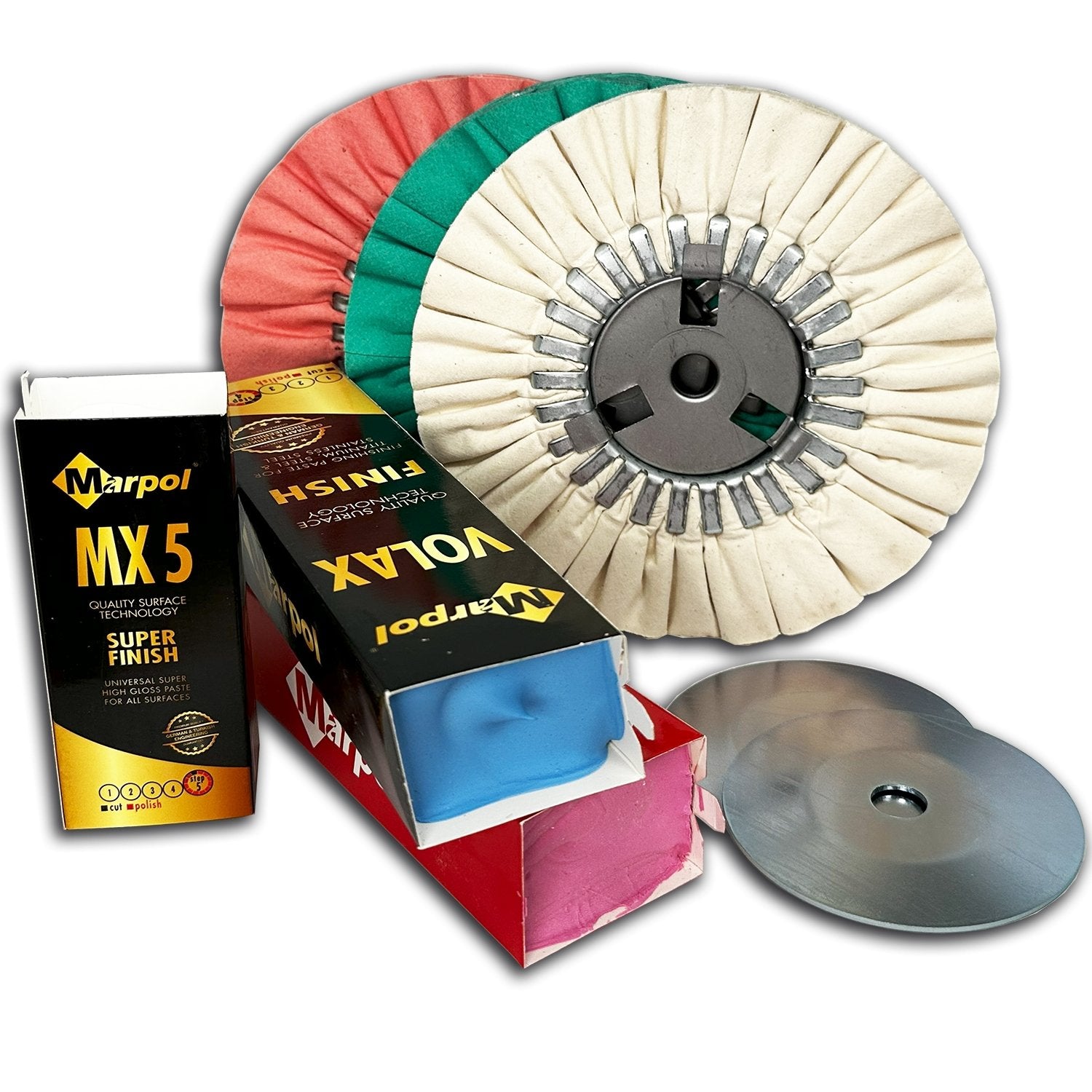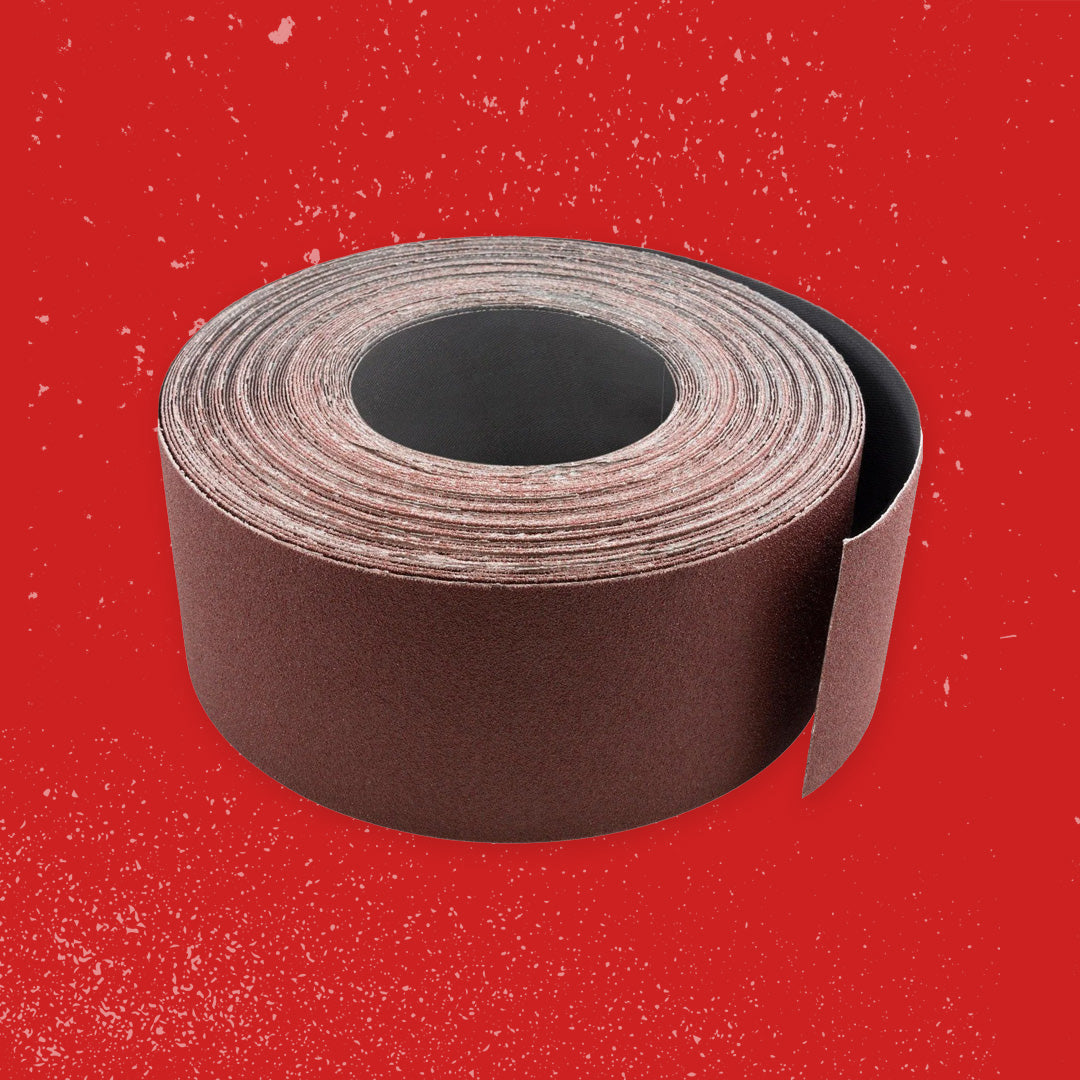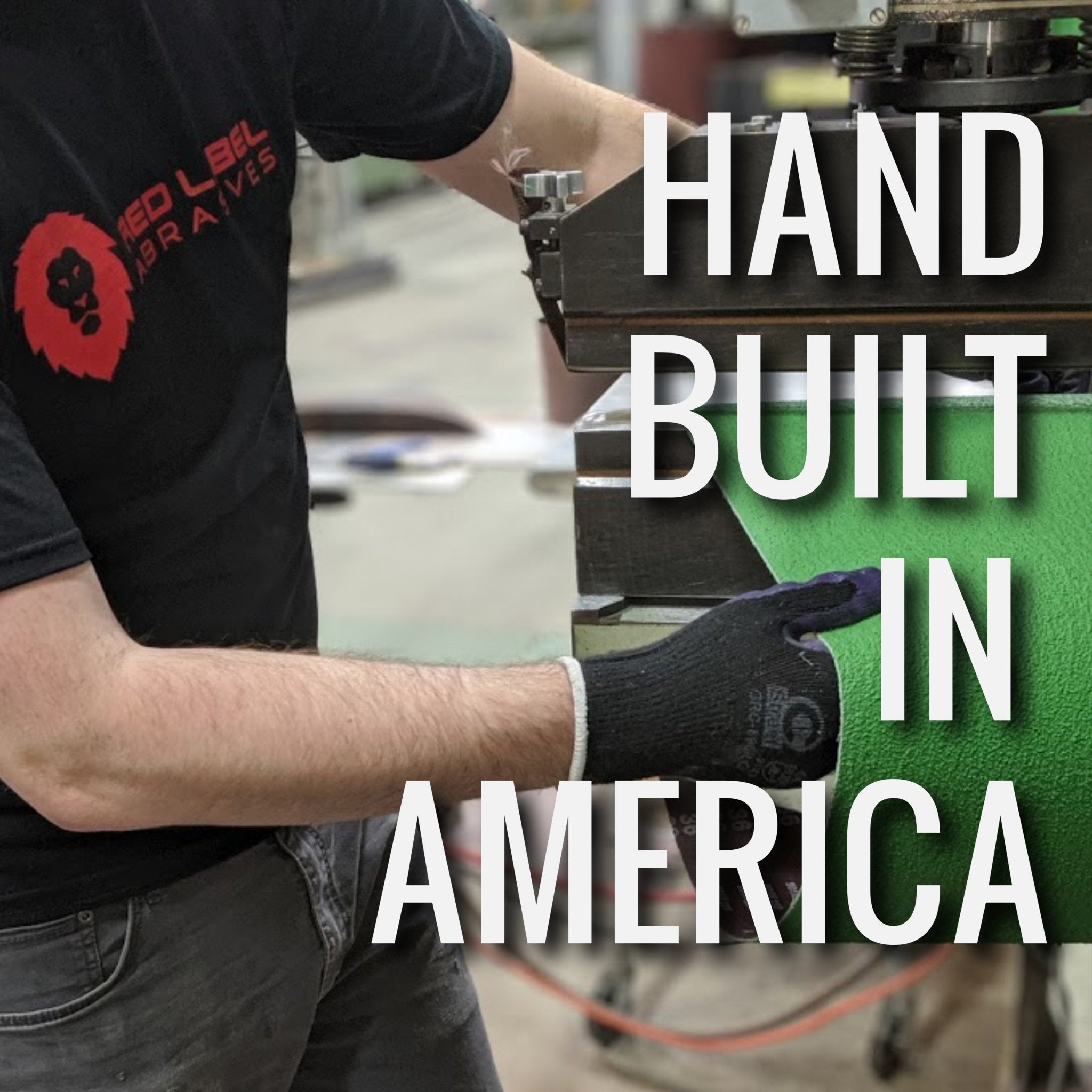Your Cart is Empty
Free Shipping over $150 (Excludes Oversized Products)
Free Shipping over $150 (Excludes Oversized Products)
Sanding Belts
Sanding Discs

How To Restore Glazed/Dull Sanding Belts
by David Kranker 4 min read

Quick Summary
Glazing on sanding belts occurs when excessive heat causes debris to fuse with the abrasive grain. You can prevent glazing by slowing down the speed of your grinder or using some form of lubricant when grinding (like a grease stick). Glazed or dull ceramic belts can be restored by pressing hardened steel into the belt to break off the flakes caked onto the belt. Other belts can be deglazed by applying a brick or old grinder wheel to the belt with intense pressure while the belt is running at full speed.
Jump To:
- What Causes Glazing or Dullness?
- How to Prevent Glazing or Dullness on Sanding Belts
- Restoring Glazed or Dull Sandpaper
Belt sanders do a great job at stripping away imperfections, shaping workpieces, and grinding surfaces down to a smooth finish. However, when you work on a lot of projects, even the most durable abrasives can become clogged with dirt and residue long before they’re due to wear out. To compound the issue, regular belt replacement can get expensive.
Can you clean sanding belts, or are they useless once they're clogged up? It turns out that you can clean them quite easily. Below are some methods you can use to thoroughly clean your sanding belts, along with some tips on proper maintenance to extend their working life.
What Causes Glazing or Dullness?
A sanding belt can become “glazed” and stop cutting even though there is plenty of grit remaining. This can happen if you work with micarta, certain oily woods, and even metal- excessive heat can cause metal dust and chips to fuse to the grain.
If a belt becomes clogged during a metalworking project, the rubbing of metal on metal creates even more friction and heat, increasing the glazing effect. Stainless steel, which is used to construct tanks and household fixtures, is more likely to experience glazing than harder metals, which are the types commonly found in knife making.
Similarly, sanding belts can dull after prolonged use. If you only work on small projects occasionally, the belts will last longer, but if you need to sand large surfaces or you have a lot of sanding projects, you’ll find your abrasives dulling more quickly.
Our Featured Products For Preventing & Restoring Glazed Belts
How to Prevent Glazing or Dullness on Sanding Belts
Glazing
Reducing heat is the key to preventing glazing on sanding belts. You can do this by:
- Slowing down the speed of your variable sander
- Using grease sticks and other forms of lubrication
If you’re working with ceramic belts, you can control the risk of glazing by pressing down more firmly for a quicker cut. When you’re grinding on a contact wheel, using a serrated wheel or glass/ceramic-lined platen can also make a significant difference.
You can get this glazing effect with any sandpaper, but it’s more prevalent on ceramics because of how the cutting grains fracture. High content ceramic belts last a long time and take more pressure to fracture grains, so heat buildup is a bigger issue.
It’s also worth noting that using the right abrasive for the application is critical. Even premium grains like ceramic don’t perform equally well during all applications, and you might want to consider blended ceramic or zirconia for some projects.
Dulling
For dulling problems, you can use a grease stick to spread a thin layer of lubricant over your sanding material. This step reduces friction heat and prevents clogging, extending the working life of the belt. It also ensures that your belts will cut more effectively, and is an effective measure for those who work with metal objects such as blades and parts.
Restoring Glazed or Dull Sandpaper
If you’ve got a glazed ceramic belt, you can ‘break through’ the buildup by waiting until the belt cools and then taking hardened steel and firmly pressing into the belt to break off flakes. With other belt types, the following strategies can work:
- Use the corner or edge of a brick or old grinder wheel to apply intense pressure to the belt while running it at full speed. Then take a steel piece and lean hard onto the belt. This will shear off the grit and restore the belt. This is a normal maintenance procedure.
- If your sanding belt is dull due to regular clogging, use an abrasive cleaning stick. This is a rubberized stick you hold against a belt as it runs through a sander. You can use one to clean wood, paint, varnish, and metal residue.They are shaped like large pencil erasers and are used to "erase" the clogs from your sanding belts, which increases their life span and improves cut and finish.
For wide belts, you can purchase water-alkaline cleaners. Most of them are biodegradable and emulsify the materials clogging your belts, making them easier to remove. They are useful for cleaning resin, wood, and paint, but won't work on metal that has accumulated on the sanding belts.
To use this method, spray the abrasive side of the belts with the liquid cleaner first. The solution will dissolve the buildup on the belts. You can then blow it all with compressed air or an air hose.
Sooner or later, all abrasive belts lose their cutting ability and have to be replaced. The steps in this article can help you restore glazed or dull belts with life left, which saves you money.
The Best Abrasives Have One Thing in Common - Quality
When you invest in a well-manufactured sanding belt, good maintenance practices are all you need to keep it cutting and grinding for as long as possible. At Red Label Abrasives, our sanding belts, sanding discs, sanding rolls, and sanding sheets and pads are made from the highest quality grains and backing materials to ensure an optimal working life. Red Label abrasives are known for being some of the longest lasting abrasives on the market. To learn more about our abrasives or place an order, please call 844-824-1956 or fill out our contact form. ABOUT THE AUTHOR
David Kranker is a writer and creative maker who has been covering the abrasive industry on the Red Label Abrasives Blog since 2020. David spends his time continually researching sanding techniques to provide readers with the latest and greatest information. In his free time, David utilizes abrasives for many different home and auto projects at his home in Delton, MI.
Our Most Popular Abrasives

EdgeCore Ceramic Sanding Belts

EdgeCore Ceramic Flap Discs

Buffing Kit
Shop By Product Category





Why Choose Red Label?








